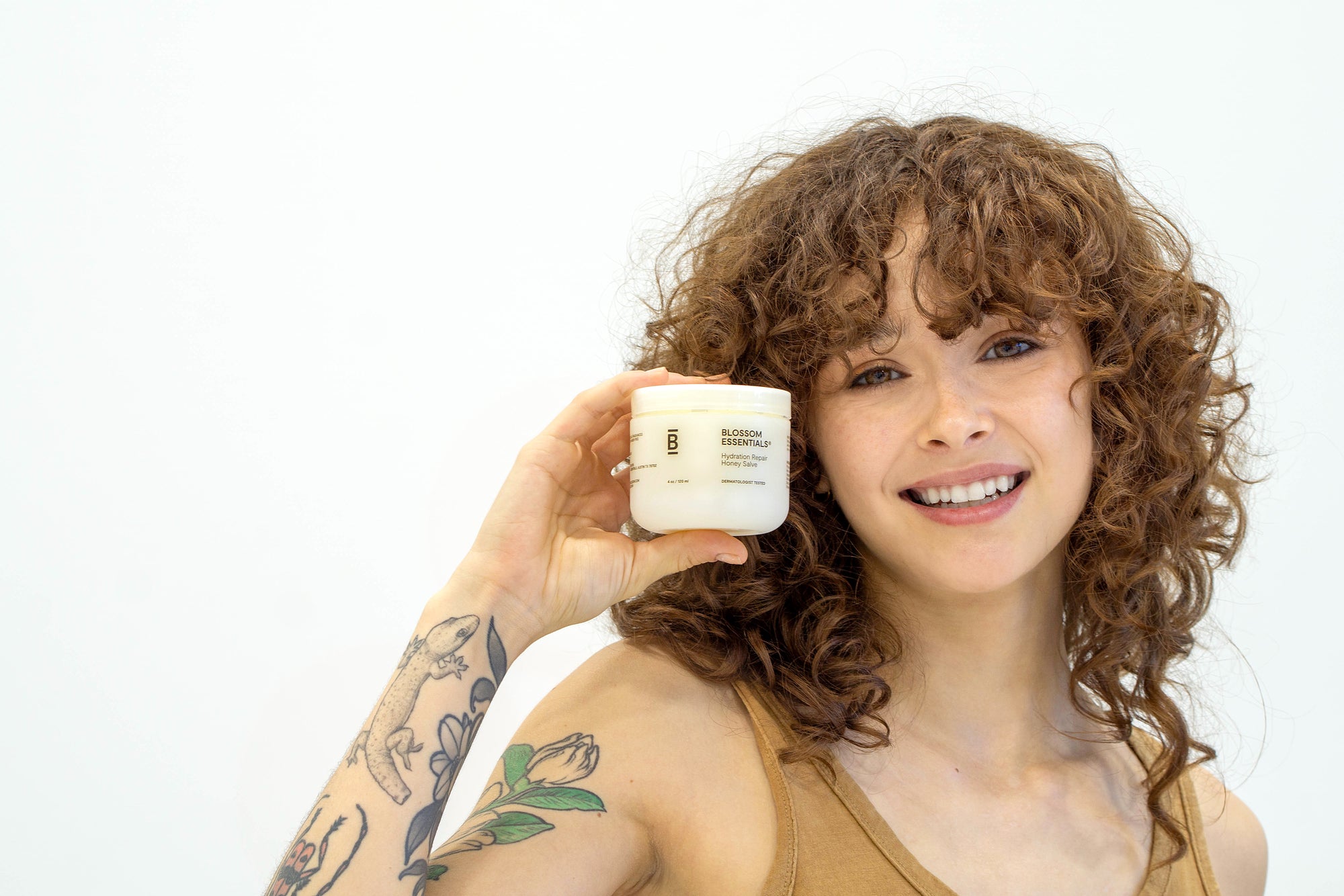

Humectant, Occlusive, and Emollient Moisturizers - The Difference and Which Type is Right for You
So you’re looking for a new moisturizer, but don’t know where to start? We get it - it can be overwhelming deciding between so many options. It’s often difficult to determine which type of moisturizer is the best fit for your skin and its unique needs. That’s why we’re here to give you the rundown on the three main moisturizer classifications – humectant, occlusive, and emollient – so you can see the difference and find the one that’s right for you!
Humectant
Humectant moisturizers are water loving, meaning that they have powerful water-absorbing properties. Humectants absorb water from the atmosphere, as well as from the lower layers of the skin, and bring this moisture to the skin’s surface layers.
Examples of humectant moisturizers are glycerin, hyaluronic acid, honey, and aloe vera (among others).
Along with water absorption, humectants also slow water evaporation from the skin, helping your skin to preserve its moisture levels. They also promote the shedding of dead skin cells by breaking down the proteins that hold the cells together, which enhances your skin’s fresh, rejuvenated glow.
Occlusive
Occlusives are moisturizing agents that form a protective layer on the skin’s surface, creating a barrier that prevents moisture loss. Occlusives mimic the skin’s natural lipid barrier, which helps to protect the skin from external irritants like weather, friction, and pollen.
Examples of occlusive moisturizers include petrolatum, mineral oil, jojoba oil, argan oil and more.
The difficulty with occlusives is that applying them can often be messy. If you opt for occlusive moisturizers, we recommend using them before bedtime since the overnight moisture can help relieve severe dryness.
Emollient
Emollients are oily substances that fill the spaces between dead skin cells, which helps to smooth out the surface of the skin. Emollients can also provide some occlusive effects, however they are primarily used to give the skin a softer look and feel.
Some examples of emollients are butters (like shea butter), natural oils (like coconut or avocado oil), lipids, and fatty acids.
Emollients are great for improving skin barrier function, as they fill the spaces between dead skin cells where the barrier has been depleted. Since skin barrier function impacts dryness, itching, and irritation (among other things), emollients can help to alleviate these issues.
What Moisturizer Type is Right for Me?
Humectants
Humectants can be amazing for all skin types, but they’re definitely well suited for people with oily skin. Given that humectants aren’t particularly oily, they won’t run the risk of clogging your pores.
Humectants can also offer powerful anti-aging effects for those looking to plump up sagging skin or hide fine lines! Because of their ultra-hydrating properties, humectants can provide temporary anti-aging effects that leave the skin looking plump and soft, while reducing the appearance of wrinkles and fine lines.
Occlusives
Occlusives are the perfect moisturizer for those with dry skin and conditions like psoriasis or eczema. Occlusives trap moisture in the skin, preventing water loss and keeping dry skin healthy and hydrated. They’re also a great go-to in winter months, as they can help to prevent your skin from losing too much moisture to the dry, winter air.
If you’re prone to oilier skin, occlusives may not be the best fit for you. Since occlusives form a physical barrier on the skin, they can clog pores and increase breakouts for oilier skin types.
Emollients
Given their wide variety, emollients are effective for all skin types. For example, those with more oily prone skin can search for products with non-comedogenic emollients, like jojoba oil, to prevent clogged pores. Meanwhile, those with more dry skin types can opt for products with comedogenic emollients, like coconut or avocado oil. Everyone deserves to benefit from a healthy-functioning skin barrier, and with emollients, everyone can!
One That Can Do It All!
It may seem too good to be true, but there is a product that features all three moisturizing types: our Hydration Repair Honey Salve! The Hydration Repair Honey Salve acts as a humectant, helping your skin retain and preserve moisture by drawing water molecules from the air, as well as underlying layers of skin, and delivering them to the outermost layer of your skin. It also forms a protective, occlusive layer on the skin's surface, using ingredients like Manuka honey and beeswax, providing a barrier that helps to prevent moisture loss from the skin. Occlusive agents found in the honey salve can also help to protect from external irritants that could further dry out or damage the skin. Finally, this salve is packed with emollients, like coconut oil and sweet almond oil, that enhance skin barrier function.
Sources
Art of Dermatology: What Should You Look for In Your Facial Moisturizer? | VeryWell Health: Why Humectants are Used in Skin Moisturizers | Healthline: What to Know About Your Skin Barrier and How to Protect It? | Healthline: How Humectants Keep Hair and Skin Moisturized
